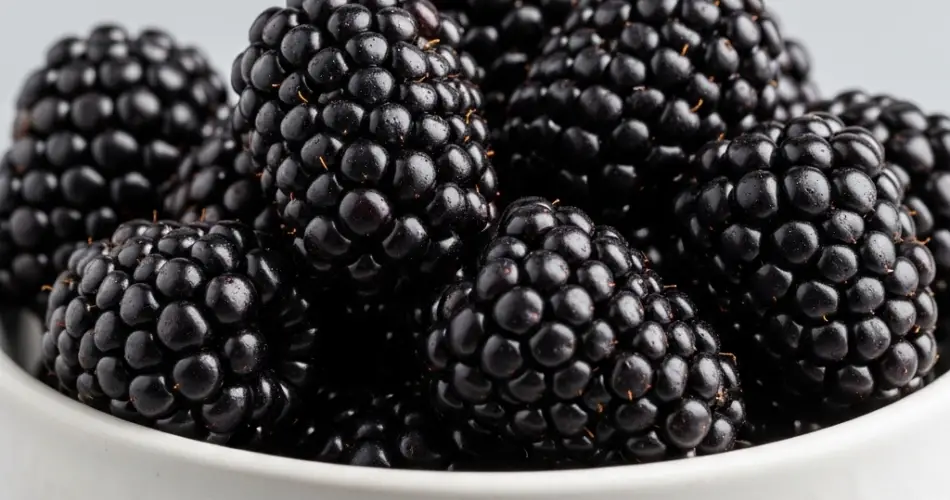Blackberries are vigorous growers that reward gardeners with juicy, antioxidant-rich fruits. However, without proper support, their sprawling canes can quickly become tangled and unmanageable. Trellising is an essential technique for growing blackberries successfully—it keeps plants upright, improves airflow, simplifies harvesting, and increases overall yield.
Whether you’re growing trailing or erect varieties, installing a trellis system ensures healthier plants and a tidier garden. Here’s how to trellis blackberry plants effectively, along with practical tips for long-term success.
Why Trellis Blackberry Plants?
Trellising is more than just organizing your garden. It plays a vital role in:
-
Keeping canes off the ground, which reduces disease and pest problems.
-
Improving fruit quality by exposing berries to better light and air circulation.
-
Making pruning, harvesting, and weeding easier and safer.
-
Preventing damage to canes from strong winds or their own weight.
Both trailing and erect blackberry varieties benefit from support, but trailing types absolutely require it due to their long, flexible stems.
Choosing the Right Type of Blackberry
Before setting up a trellis, determine which type of blackberry you’re growing:
-
Erect Blackberries
These have stiff, upright canes that can stand on their own for a while but benefit from a simple support system as they mature and bear fruit. -
Semi-Erect Blackberries
These plants have arching canes that often need tying to a trellis to prevent drooping under the weight of fruit. -
Trailing Blackberries (also known as Dewberries)
These varieties send out long, flexible canes that must be trained along wires or supports to grow productively.
Knowing your plant type helps you choose the best trellising method.
Best Trellis Styles for Blackberries
Here are the most common and effective trellis designs for blackberry plants:
1. Two-Wire Trellis (Simple and Popular)
-
Install two sturdy posts about 8 feet apart and 5–6 feet tall.
-
Run two wires horizontally, one at about 3 feet and the second at 5 feet above ground.
-
Tie the canes loosely to the wires as they grow.
This setup works well for erect and semi-erect varieties and is easy to manage.
2. T-Trellis (Ideal for Trailing Types)
-
Use posts shaped like a “T” at the top.
-
Run two horizontal wires on each side of the post’s crossbar, spaced 12–18 inches apart.
-
Drape or tie canes to the wires, training them horizontally in both directions.
This setup keeps canes neatly spread, maximizing sun exposure and air movement.
3. V-Trellis (Good for Heavy Fruit Loads)
-
Two angled arms form a “V” shape.
-
Wires are attached to each arm, holding canes away from the center.
-
Improves light penetration and makes harvesting easier.
This method is slightly more complex to build but great for increasing airflow and managing dense plantings.
How to Train Blackberry Canes
Once the trellis is set up, training your blackberry canes becomes part of regular garden maintenance. Follow these basic tips:
-
In spring, as new canes (primocanes) emerge, begin gently tying them to the trellis with soft ties or garden twine.
-
Tip prune the canes when they reach about 3–4 feet tall to encourage lateral branches, which produce fruit.
-
In late summer or fall, after fruiting, remove old fruiting canes (floricanes) down to the ground. Leave healthy new canes tied to the trellis for next year’s crop.
-
Space canes evenly along the wires to avoid overcrowding and improve air circulation.
Always tie canes loosely to avoid damaging stems as they grow.
Maintenance and Seasonal Care
Keeping the trellis in good shape is just as important as building it. Here are a few maintenance tips:
-
Check wires and ties regularly for damage or loosening.
-
Replace any rotting posts or frayed twine as needed.
-
In winter or early spring, prune and clean up around the base to prevent disease and encourage strong new growth.
-
Add mulch around the base to retain moisture and suppress weeds.
By maintaining the trellis system, you ensure long-term productivity and healthier plants.
Bonus Tips for Bigger Harvests
-
Fertilize appropriately in early spring with a balanced or berry-specific fertilizer.
-
Water deeply and regularly during dry spells, especially when fruit is forming.
-
Protect ripening berries from birds by using netting or row covers.
Trellised plants make it much easier to apply protective measures and keep the fruits accessible and clean.
Final Thoughts
Trellising blackberry plants might take a little extra time and effort in the beginning, but the benefits are well worth it. You’ll enjoy neater rows, healthier plants, and a more enjoyable picking experience. With proper support, your blackberry canes will flourish—producing sweet, abundant harvests season after season.
Turn your bramble patch into an organized berry haven—start trellising your blackberry plants today and watch your harvest thrive.



